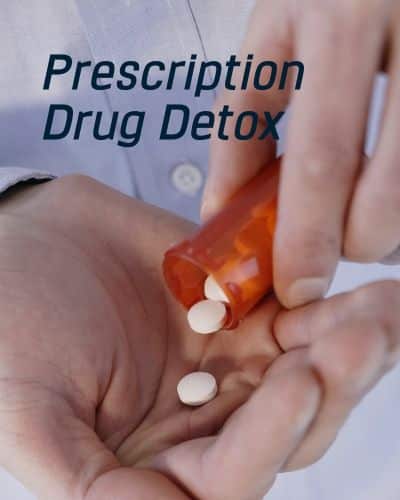Prescription Drug Addiction is a disease that affects a person’s behavior and brain; this condition represents a huge problem in the US. According to the American Addiction Centers, in the piece ‘Prescription Drug Addiction and Treatment of Prescription Drug Abuse, Prescription Drug Addiction is a disease that affects a person’s behavior and brain; this condition represents a huge problem in the US.
According to the American Addiction Centers, in the piece ‘Prescription Drug Addiction and Treatment of Prescription Drug Abuse, about 52 million Americans older than 12 have used prescription medications non-medically at some point in their lives. Being addicted to Prescription Drugs is a process that happens slowly.
Some people don’t notice the moment at which they shift from recreational abuse to intense addiction, but when addiction takes hold, it can be serious. [1] Some people don’t notice the moment at which they shift from recreational abuse to intense addiction, but when addiction takes hold, it can be serious. [1]
Prescription drugs are designed to treat certain medical conditions or ease the discomfort that diseases can bring. For people with medical conditions like asthma or cancer, and for people with mental health conditions like depression or anxiety, prescription medications can mean the difference between a healthy and happy life or an upsetting and painful illness. But some people use prescription medications for reasons that have very little to do with illnesses. These people take prescription medications recreationally, and there are a lot of people just like this in the world.
Causes Of Prescription Drug Addiction
As stated by Healthline.com, in the piece medically reviewed by Alan Carter, Pharm.D., ‘The Most Addictive Prescription Drugs on the Market’, drug addiction is a component of drug use disorder. It’s a disease that can affect your brain and behavior, making it difficult to control your use of drugs. Some people become addicted to illicit recreational drugs, such as cocaine or heroin. However, it’s also possible to become addicted to medications that your doctor has prescribed. If you are having prescription drug abuse, you may compulsively use it, even when it causes you harm.

Some prescription drugs are more addictive than others. Most addictive drugs affect your brain’s reward system by flooding it with dopamine. This results in a pleasurable “high” that can motivate you to take the drug again. Over time, you might become dependent on the drug to feel “good” or “normal.” You might also develop a tolerance to the drug. This can push you to take larger doses. [2]
Commonly Misused Prescription Drugs
- Opioids: are a class of drugs that include the illegal drug heroin, synthetic opioids such as fentanyl, and pain relievers available legally by prescription, such as oxycodone (OxyContin®), hydrocodone (Vicodin®), codeine, morphine, and many others. All opioids are chemically related and interact with opioid receptors on nerve cells in the body and brain. Opioid pain relievers are generally safe when taken for a short time and as prescribed by a doctor, but because they produce euphoria in addition to pain relief, they can be misused (taken differently or in a larger quantity than prescribed, or taken without a doctor’s prescription). Regular use—even as prescribed by a doctor—can lead to dependence and, when misused, opioid pain relievers can lead to addiction, overdose incidents, and deaths. [6]
- Oxycodone (OxyContin): is commonly sold under the brand name OxyContin. It’s also sold in combination with acetaminophen as Percocet. It changes how your central nervous system (CNS) responds to pain. Like heroin, it creates a euphoric, sedative effect. According to the Drug Enforcement Administration (DEA), [3] 58.8 million prescriptions for oxycodone were dispensed in the United States in 2013.
- Codeine: is typically prescribed to treat mild to moderate pain. It’s also combined with other medications to treat cold and flu symptoms. For example, it’s commonly found in prescription-strength cough syrup. When consumed in high quantities, codeine-based cough syrup has a sedative effect. It can also cause altered levels of consciousness. It provides the base for an illicit drug concoction known as “purple drank,” “sizzurp,” or “lean.” This concoction also contains soda and sometimes candy.
- Fentanyl: is a synthetic opioid. It’s prescribed for acute and chronic pain, typically in people with cancer. According to the Centers for Disease Control and Prevention (CDC), it’s 50 to 100 times stronger than morphine. It creates feelings of euphoria and relaxation. Fentanyl is also illegally manufactured and sold as an illicit recreational drug. In many cases, it’s mixed with heroin, cocaine, or both. In October 2017, the CDC reported that fentanyl is involved in over half of opioid-related overdose deaths across 10 states. In addition to the common signs and symptoms associated with opioid misuse, fentanyl misuse may also lead to hallucinations and bad dreams.
- Meperidine (Demerol): is a synthetic opioid. It’s often sold under the brand name Demerol. It’s typically used to treat moderate to severe pain. Like other opioids, it produces feelings of euphoria.
According to the CDC, 2,666 Americans died in 2011 from drug poisoning that involved opioid painkillers other than methadone, such as meperidine or fentanyl. [2]
Symptoms of Prescription Drug Addiction
According to the piece ‘Prescription Drug Abuse’, published by Mayoclinic.org, the signs or symptoms of Prescription Drug Addiction depend on the specific substance the person may be taking. That’s because each Prescription Drug abuse has its own mind-altering properties. [4]
Opioids
- Constipation
- Nausea
- Feeling high (euphoria)
- Slowed breathing rate
- Drowsiness
- Confusion
- Poor coordination
- Increased dose required for pain relief
- Worsening or increased sensitivity to pain with higher doses (hyperalgesia)
Anti-anxiety medications and sedatives
- Drowsiness
- Confusion
- Unsteady walking
- Slurred speech
- Poor concentration
- Dizziness
- Problems with memory
- Slowed breathing
Stimulants
- Increased alertness
- Increased heart rate
- Irregular heartbeat
- High blood pressure
- High body temperature
- Reduced appetite
- Insomnia
- Agitation
- Anxiety
- Paranoia
Other side effects include
- Stealing, forging or selling prescriptions
- Taking higher doses than prescribed
- Excessive mood swings or hostility
- Increase or decrease in sleep
- Seeking prescriptions from more than one doctor
- Poor decision-making
- Appearing to be high, unusually energetic or revved up, or sedated
- Requesting early refills or continually “losing” prescriptions, so more prescriptions must be written
Prescription Drug Addiction Risk Factors
People often fear they might become addicted to medications prescribed for medical conditions, such as painkillers prescribed after surgery. But you can reduce your risk by carefully following your doctor’s instructions on how to take your medication. Prescription drug abuse can happen at any age but commonly begins in teens or young adults. [4]
Risk factors for prescription drug abuse include:
- Past or present addictions to other substances, including alcohol and tobacco
- Family history of substance abuse problems
- Certain pre-existing psychiatric conditions
- Exposure to peer pressure or a social environment where there’s drug use
- Easier access to prescription drugs, such as having prescription medications in the home medicine cabinet
- Lack of knowledge about prescription drugs and their potential harm
Preventing Prescription Drug Addiction
Here are some key ways to reduce the risk of being addicted to prescriptions drugs, such as painkillers, sedatives, or stimulants to treat a certain medical condition.
- Make sure you’re getting the right medication. Make sure your doctor clearly understands your condition and the signs and symptoms. Tell your doctor about all your prescriptions, as well as over-the-counter medications, herbs, supplements, alcohol, and other drug use. Ask your doctor whether there’s an alternative medication with ingredients that have less potential for addiction.
- Check in with your doctor. Talk with your doctor on a regular basis to make sure that the medication you’re taking is working, and you’re taking the right dose.
- Follow directions carefully. Use your medication the way it was prescribed. Don’t stop or change the dose of a drug on your own if it doesn’t seem to be working without talking to your doctor. For example, if you’re taking a pain medication that isn’t adequately controlling your pain, don’t take more.
- Know what your medication does. Ask your doctor or pharmacist about the effects of your medication, so you know what to expect. Also check if other drugs, over-the-counter products, or alcohol should be avoided when taking this medication.
- Never use another person’s prescription. Everyone is different. Even if you have a similar medical condition, it may not be the right medication or dose for you.
- Don’t order prescriptions online unless they’re from a trustworthy pharmacy. Some websites sell counterfeit prescription and nonprescription drugs that could be dangerous. [4]
Prescription Drug Addiction Treatment
According to The National Institute on Drug Abuse, in the piece ‘Misuse of Prescription Drugs Research Report. How can Prescription Drug addiction be treated?’, years of research have shown that substance use disorders are brain disorders that can be treated effectively. Treatment must take into account the type of drug used and the needs of the individual.
Successful treatment may need to incorporate several components, including detoxification, counseling, and medications, when available. Multiple courses of treatment may be needed for the patient to make a full recovery.
The two main categories of drug use disorder treatment are behavioral treatments (such as contingency management and cognitive-behavioral therapy) and medications.

Behavioral treatments
Behavioral treatments help patients stop drug use by changing unhealthy patterns of thinking and behavior; teaching strategies to manage cravings and avoid cues and situations that could lead to relapse; or, in some cases, providing incentives for abstinence. Behavioral treatments, which may take the form of individual, family, or group counseling, also can help patients improve their personal relationships and their ability to function at work and in the community.
Medications
Addiction to prescription opioids can additionally be treated with medications including buprenorphine, methadone, and naltrexone. These drugs can prevent other opioids from affecting the brain (naltrexone) or relieve withdrawal symptoms and cravings (buprenorphine and methadone), helping the patient avoid relapse. Medications for the treatment of opioid addiction are often administered in combination with psychosocial supports or behavioral treatments, known as medication-assisted treatment (MAT). Medication to reduce the physical symptoms of withdrawal (lofexidine) is also available.
Prescription Drug addiction Treatment Center Southern California
Prescription Drug Addiction is a chronic disease that can cause major health, social, and economic problems that should not be taken lightly. We Level Up California Treatment Center can provide you, or someone you love, with the tools to recover from Prescription Drug Addiction with professional and safe treatment. Feel free to call us to speak with one of our counselors. Our specialists know what you are going through. Please know that each call is private and confidential.
Sources
[1] Prescription Drug Addiction – Drug Enforcement Administration (DEA) – https://www.dea.gov/
[2] ‘Misuse of Prescription Drugs Research Report. How can Prescription Drug Addiction be treated?’ – National Institute on Drug Abuse (www.drugabuse.gov)
[3] ‘Opioids’ Prescription Drug Addiction – National Institute on Drug Abuse (www.drugabuse.gov)
